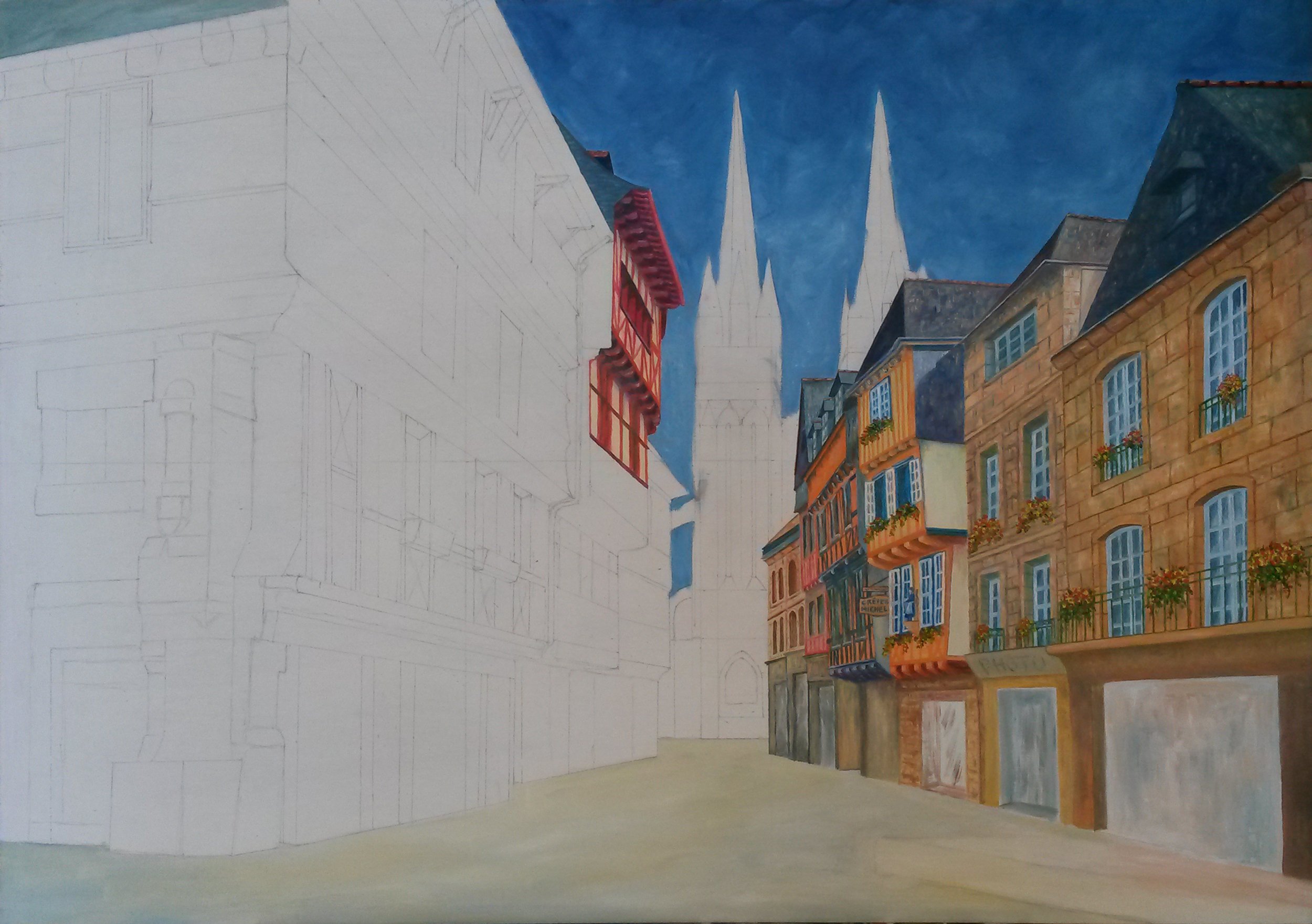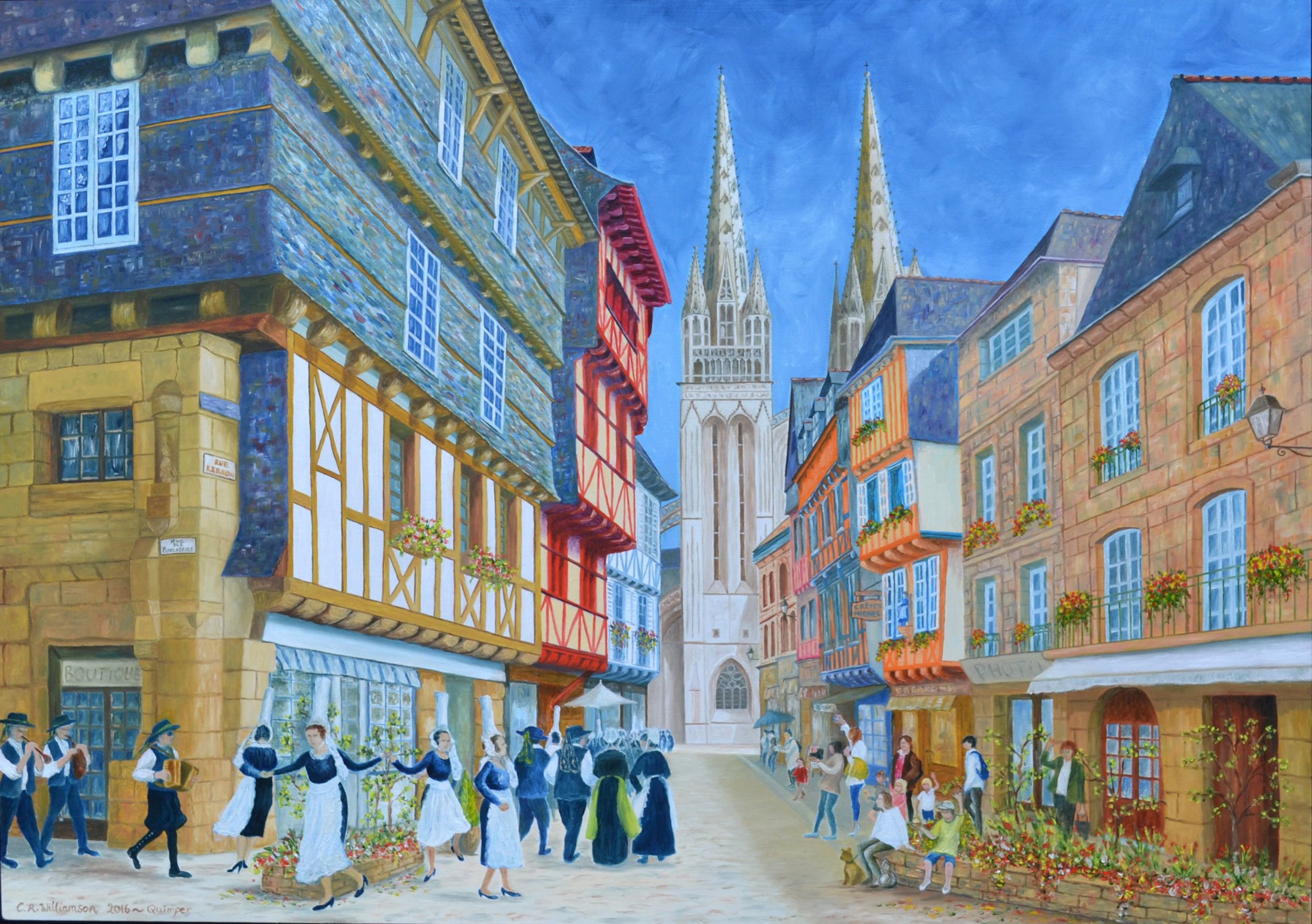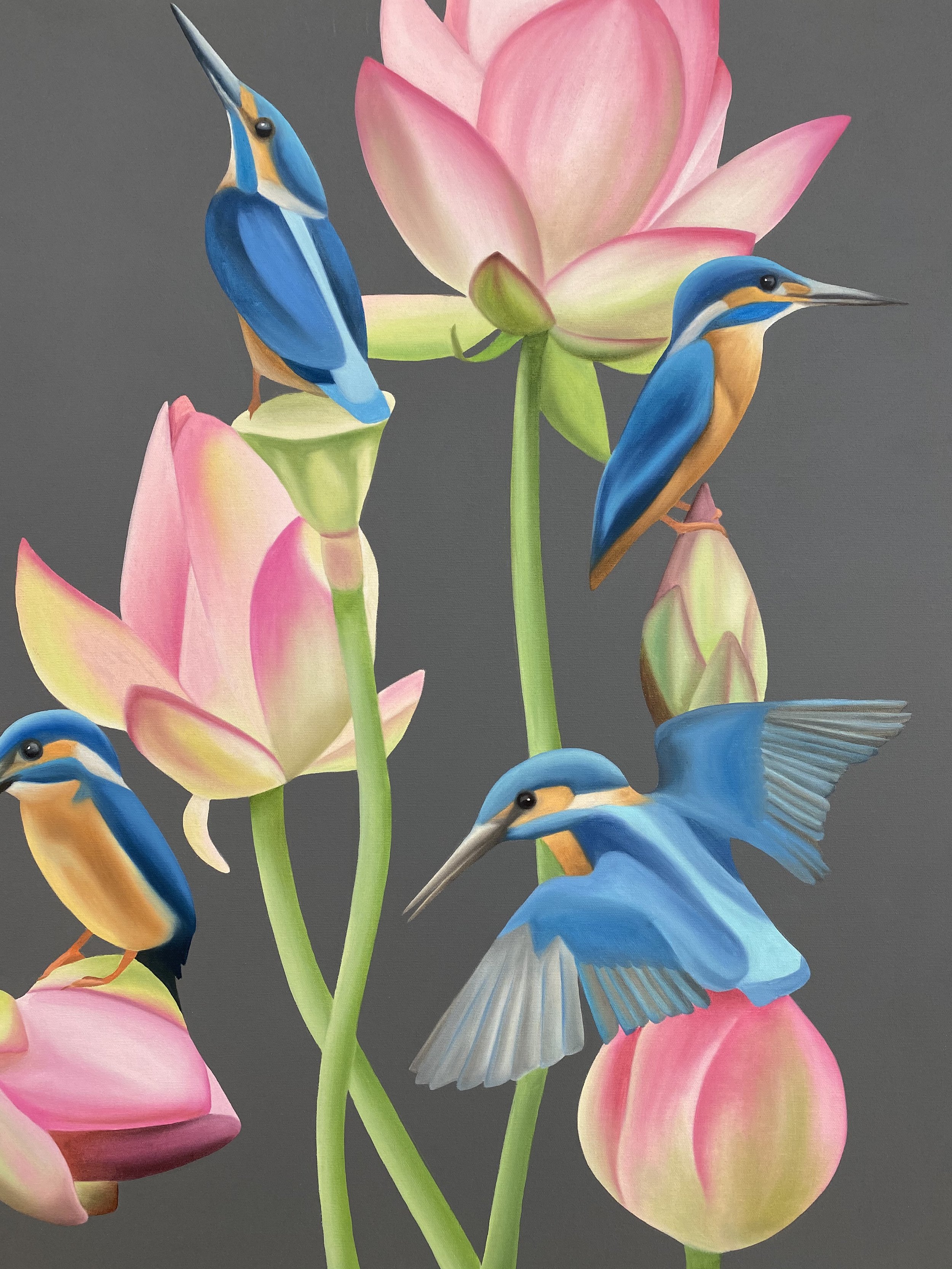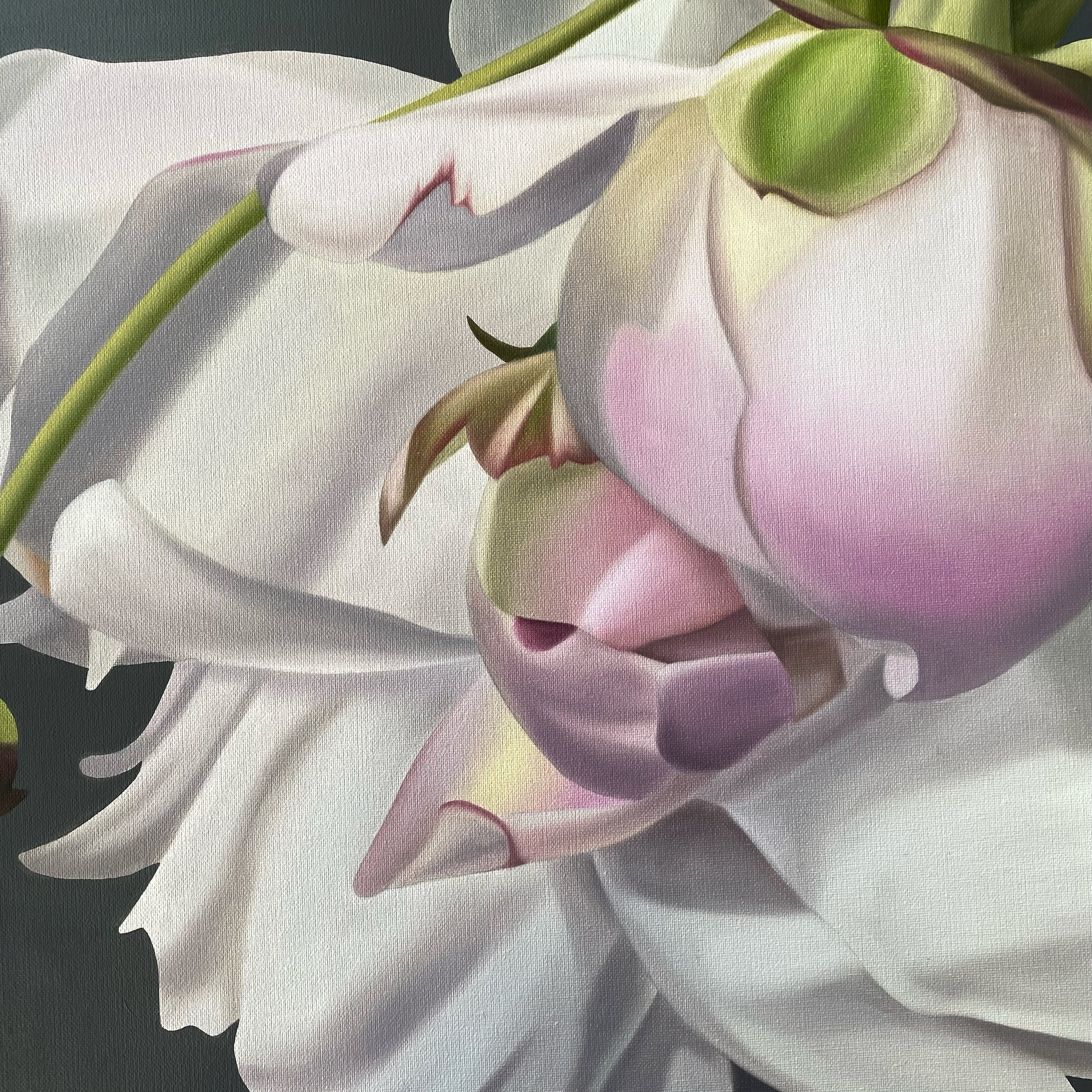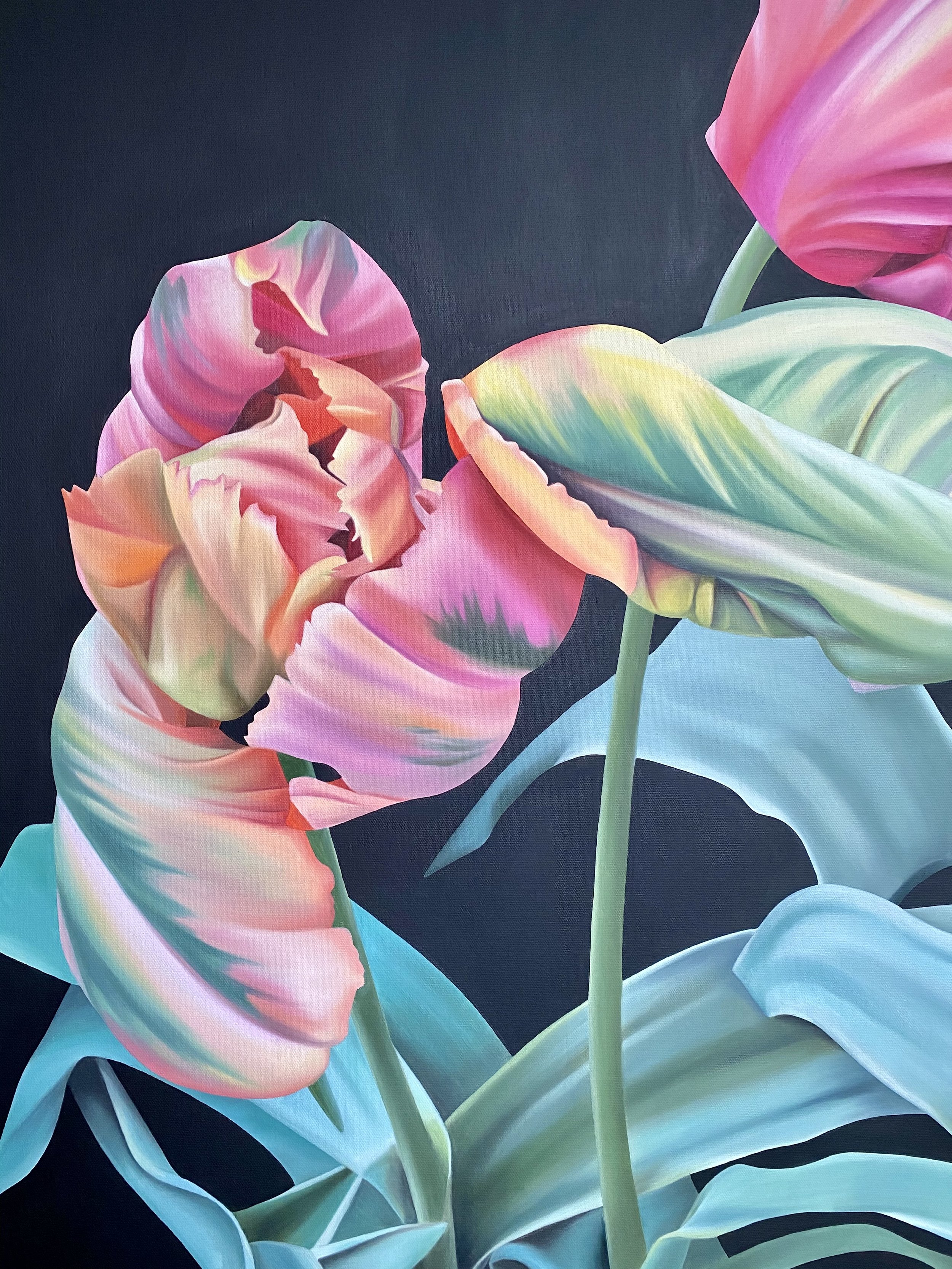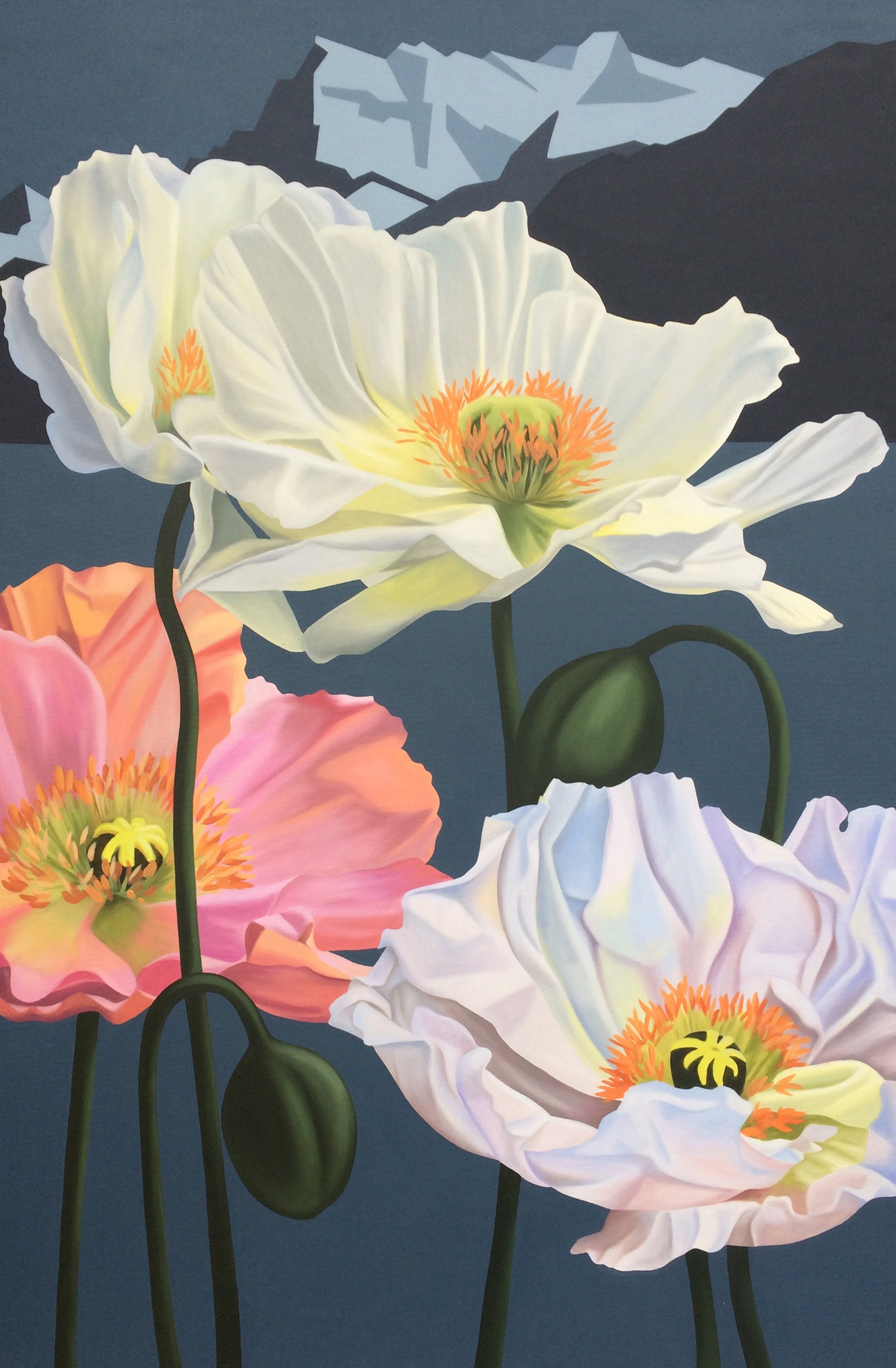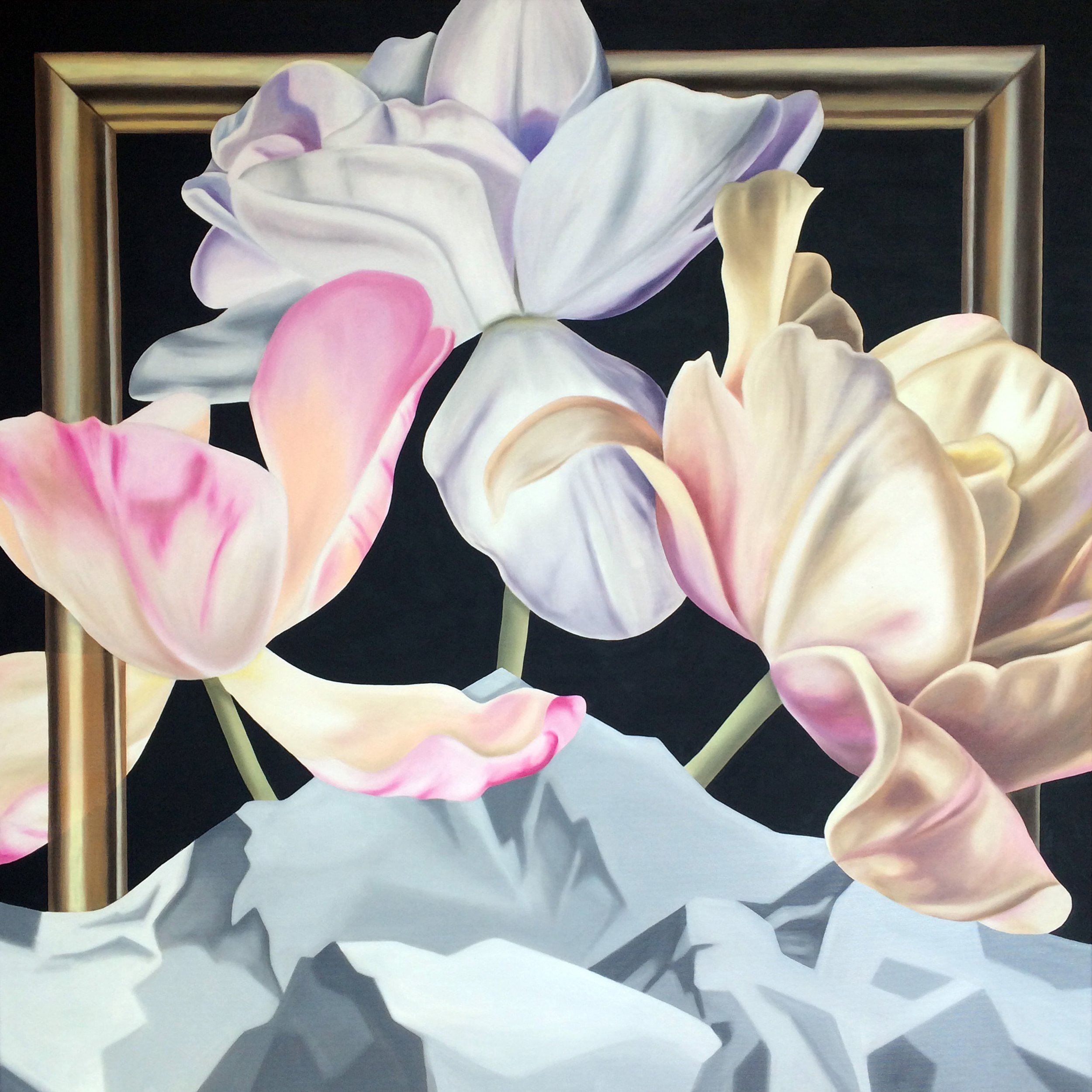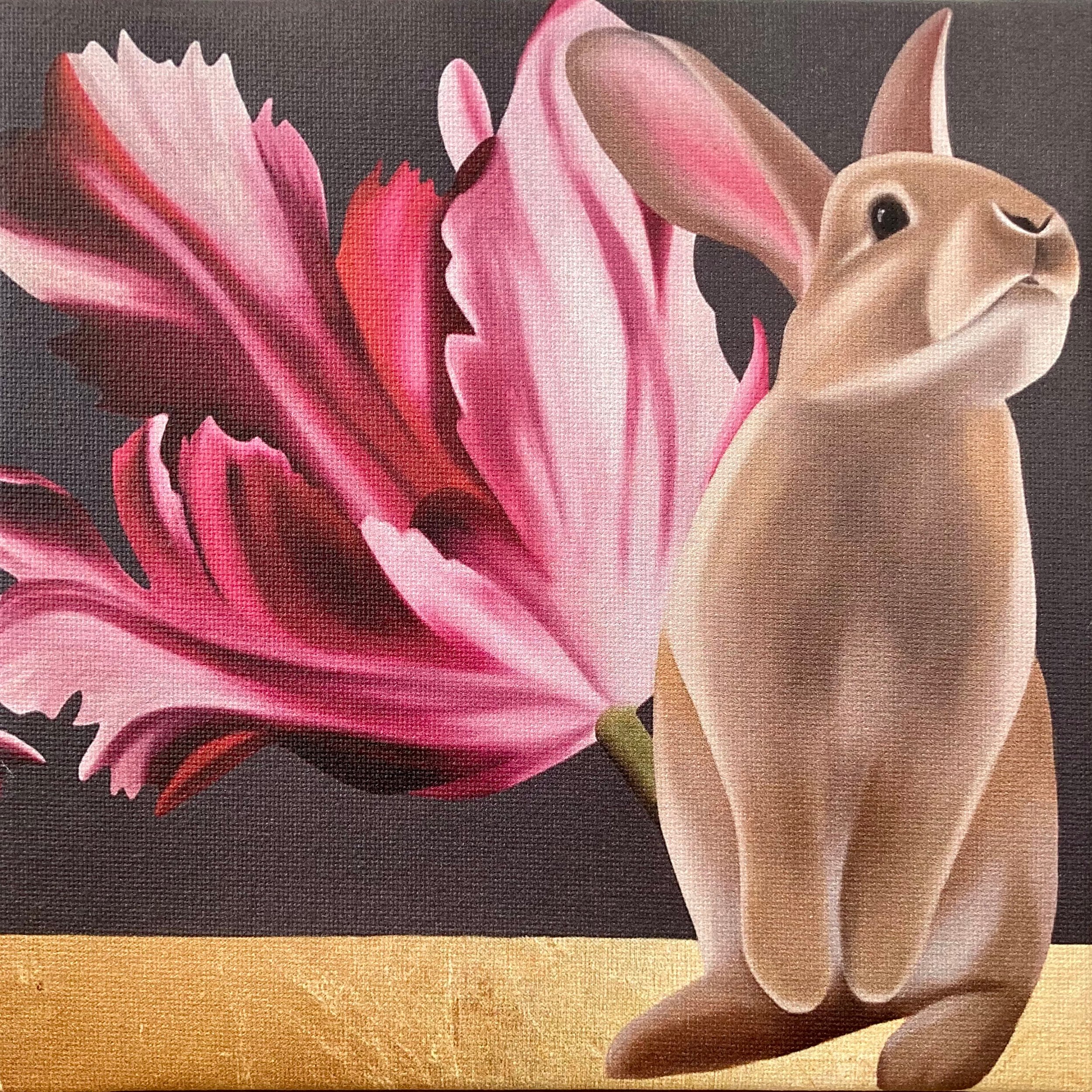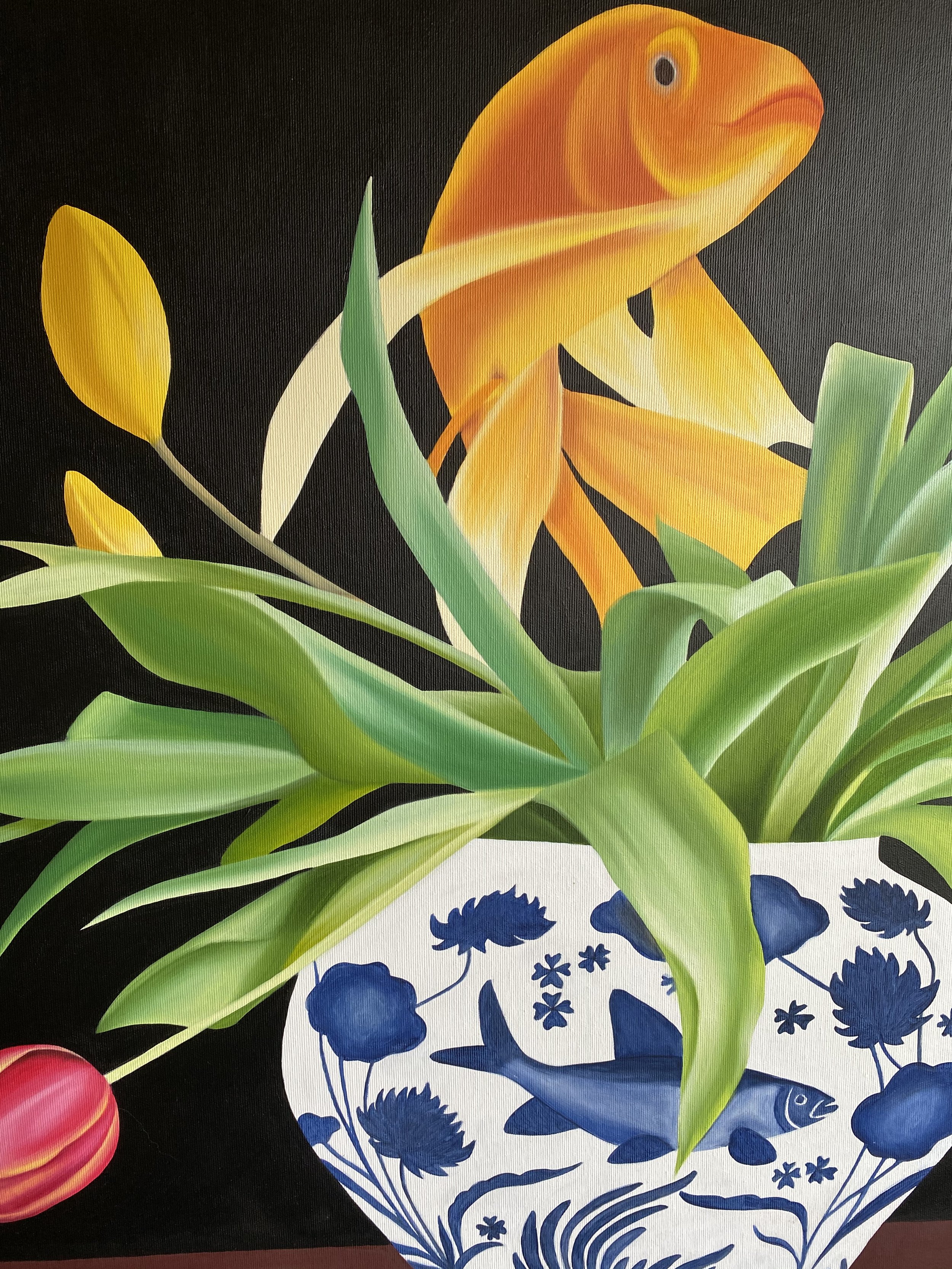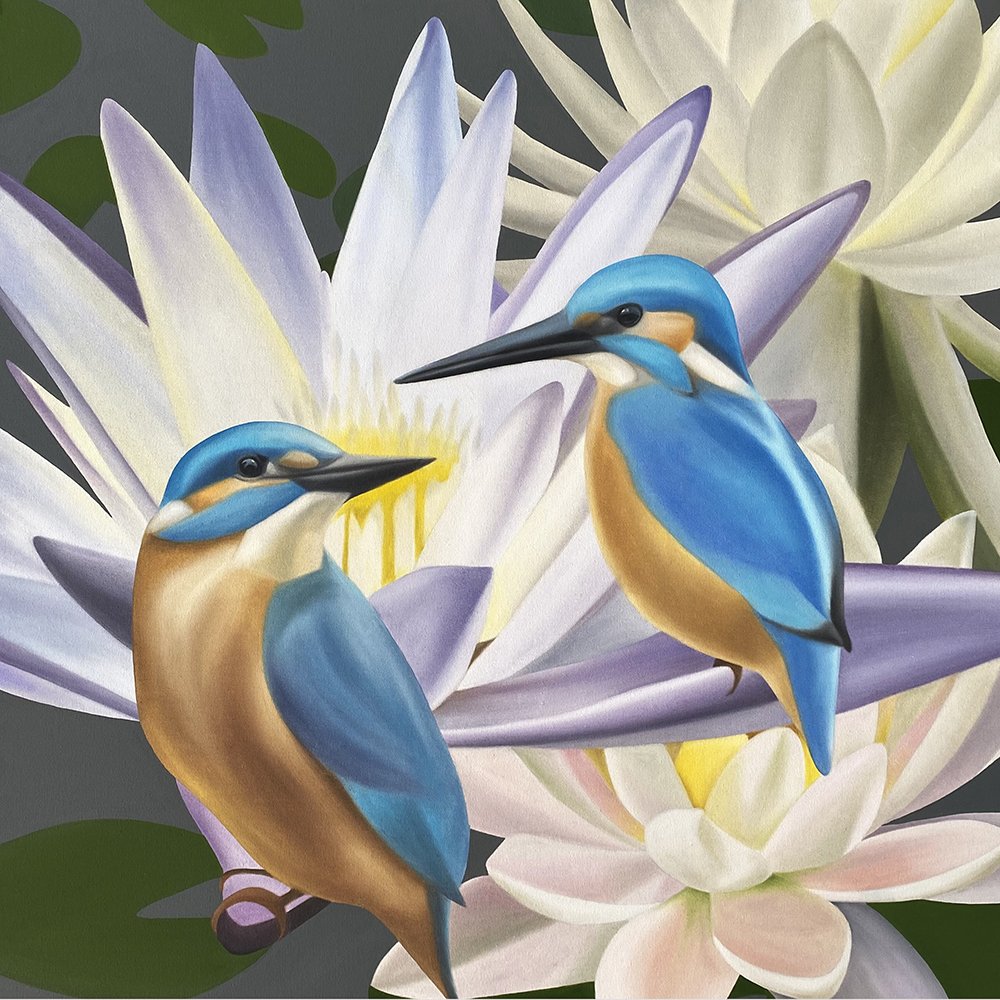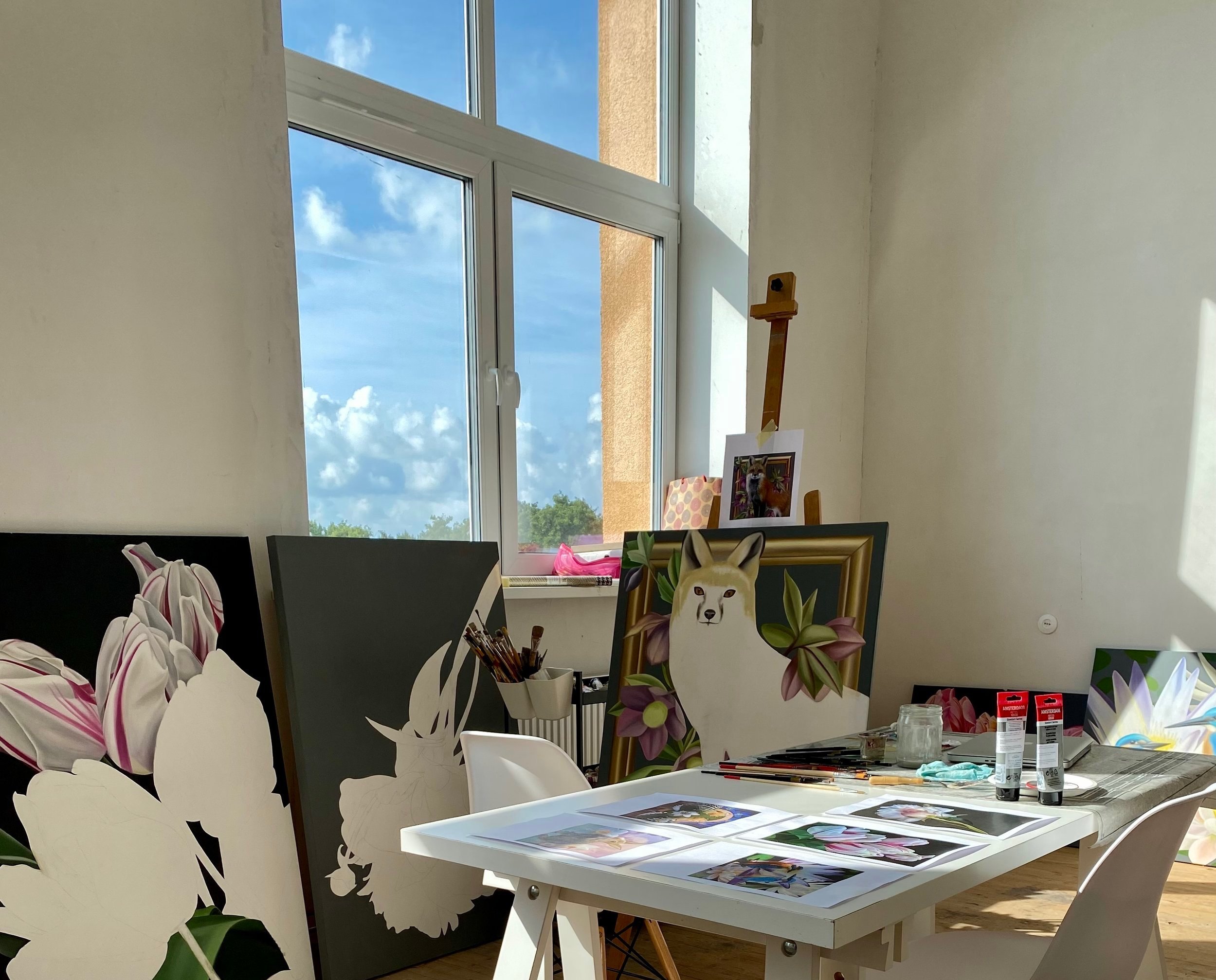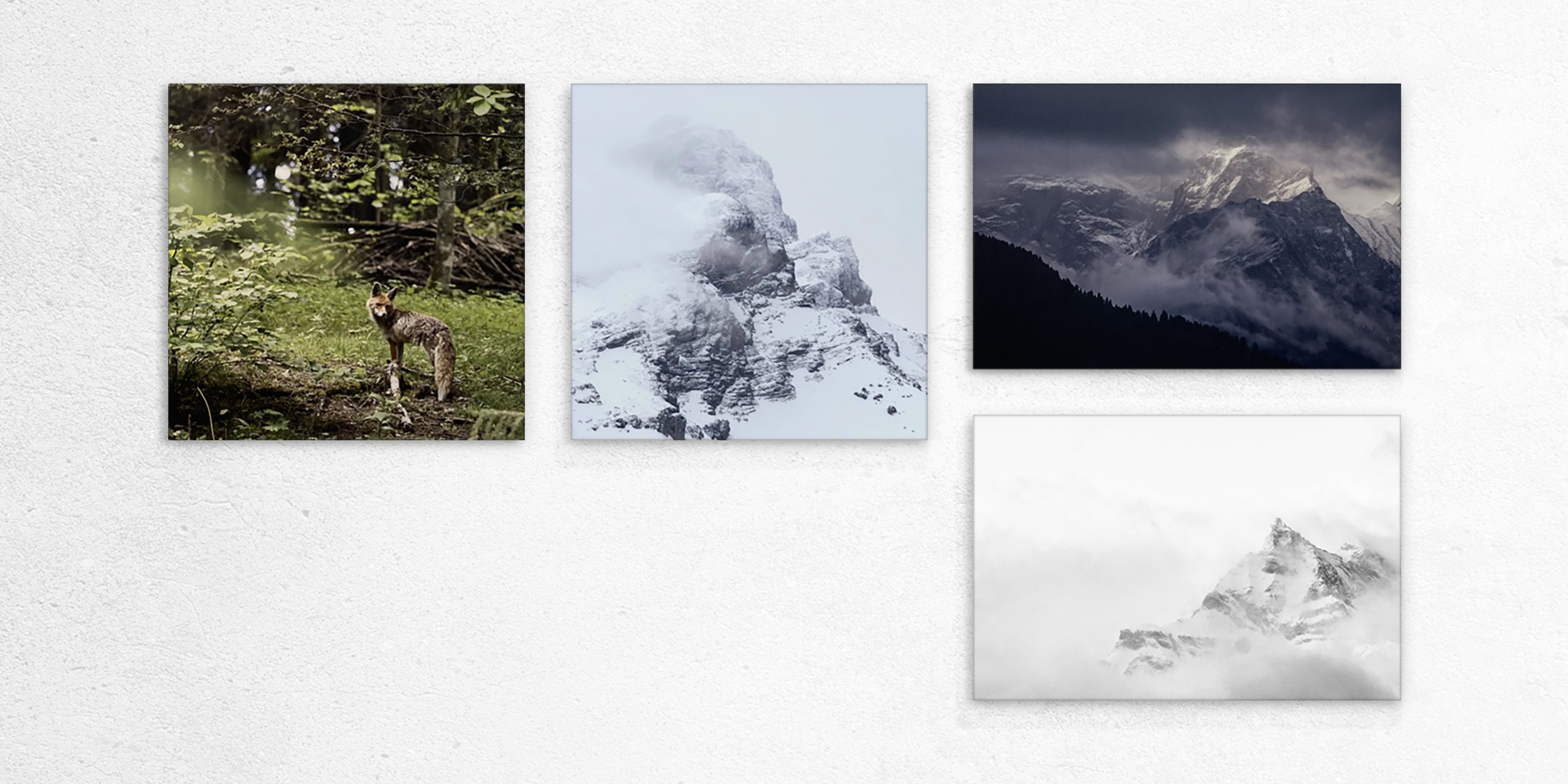We’re excited to be included in “111 Lieux des Alpes vaudoises à ne pas manquer“, a guide book by Marc Voltenauer and Benjamin Amiguet. Check us out on their website too!
Many thanks to Riviera Chablais for featuring Galerie Alpine. Our doors are open. Come discover artwork by local artists!
Interview with Christine Ann Williamson: All in the Brush Strokes
You’re originally from England, but you’ve established deep roots in Switzerland. When did you move to Switzerland?
Many, many years ago, or once upon a time if you prefer, I first came to Switzerland with a group of girls from my high school in England. It was a 10 day ski holiday in Champéry, at the end of which I did actually learn to ski!
Most importantly, I was absolutely bowled over by the mountains, the scenery, the whole atmosphere. I vowed to myself to come back one day. And I did a few years later, and have stayed ever since.
In what part of Switzerland do you live? What do you like about living in Lausanne?
I’ve settled in Lausanne. I love living here. I would say that everything here makes me happy. The 4 seasons are well defined. You have the lake, the vineyards, the incredible views over the mountains, the Jura, Evian across the lake, the surrounding countryside and picturesque towns and villages.
From Lausanne, you can go everywhere so easily, especially by train. Train journeys are really exciting. My 3 grown-up children and 6 grandchildren all live nearby.
Your grandfather and father were also artists. What lasting impacts did they make on your art practice?
My father said to always get your perspective right, and, if at first, you don’t succeed, try try try again.
When I work on a painting or an illustration, I feel my father’s presence. He was very patient and methodical, so this impacts my art. I feel I must also be methodical and work patiently to get the details right.
Personally, I wouldn’t throw paint onto the canvas and let it drip down, well not for the moment anyway. Who knows? One day I might, but with no guarantee that my technique would be anywhere near amazing!
When did you start your professional art practice?
My first exhibition took place in the village of Oulens-sous-Echallens in October 1997. It’s a charming old village in the Gros-de-Vaud, nestling in beautiful countryside at the foot of the Jura and I found it very inspiring. I produced over 60 paintings and found a spare building in the village where I held the exhibition.
It proved to be a big local event and a huge success. People came to buy the painting of their houses or farm, and farmers bought the painting of their cows in their fields! The final ones I did weren’t even dry, but they were sold and carried very carefully to their new homes!
I must say that I was pleased with every piece in that exhibition. I learned the hard lesson of parting with one’s own creations but realized with great pleasure that they would be loved in a new home.
You’ve devoted your art practice to showcasing Swiss life and landscape. What do you do to connect with the Swiss spirit?
My husband and I walk locally every day, but our favourite walks are in the mountains. We have also walked all around Lake Léman which we organised in 12 stages over 2 weeks. An unforgettable project which we did twice! And in the winter, we snowshoe in the mountains
What is your favourite subject matter to paint?
Anything that inspires me, and I see things figuratively and not in any way in the abstract.
My paintings are almost always about man-made structures, people, animals, or birds set in natural surroundings. Cities inspire me mostly if they’re historical. I was commissioned to paint the old town of Quimper in France, which I thoroughly enjoyed.
At the moment I’m working on the painting of yet another mountain. I see them as portraits, each one with its own expression and character.
Do you work from photos, your imagination, or do you do plein air painting?
I enjoy plein air sketching and painting in my studio. I take my own photos of a scene that has particularly inspired me, so I have the genuine feeling of my emotional response to it at that particular time, which gives energy to the brush strokes. I also have paintings that I had been working on when hearing that something dramatic had happened. It’s all in the brush strokes of the part I was doing at that time.
How long does it take to finish one of your paintings?
I have always kept a record of all my paintings. For each one, the date I started and finished, counting the hours it took me, and the daily comments on its progress. So depending on the size, a painting can take me between 1 and 130 hours, perhaps more if very complex. The hours add up when a subject is very detailed. I must add that I wish I could produce my paintings in an hour or two! But unfortunately for me, that’s impossible. I have my own disciplined rhythm and that’s that.
Do you have any exciting projects planned for the future?
A while ago, I was asked to illustrate a bilingual children’s story and design the whole book. This was a big project and I’m happy to say that it was finished. It has been published and is on sale in several shops, both in Switzerland and in England. I have other stories illustrated and waiting in the drawer. My future projects include finishing these, as well as carrying on with my paintings.
Artpéro: An Evening of Art and Drinks
Samedi 16 Avril 2022, 18-20h
Galerie Alpine, 97 Avenue Centrale, 1884 Villars-sur-Ollon
Come along to our ‘art & aperitif’ cultural evening. Come to meet the artists - all welcome!
Venez pour notre soirée d'art et d'apéritif. Rencontrez les artistes, soyez tous les bienvenus!
Interview with Ildze Ose: Light Will Always Win
Happiness
You’re a formally trained designer, and you worked professionally as a designer until recently. How did your art fit into your life as a designer?
Yes, I have studied graphic design and functional/product design at two different academies. For the past few years, I was an environmental designer at the local council. It involved both administrative tasks and a lot of creative work. I was responsible for their graphic identity and all the seasonal decorations for the city. For me, art and design always come together. I don't separate them. That's just how my mind works. Everything must be aesthetically beautiful.
Since August of last year, I've been a full-time painter and freelance graphic designer. Although it was a bit scary to quit a full-time job, I haven't regretted the decision even for a minute.
You’re in Liepāja now, but you started exhibiting in Switzerland earlier in your art career and lived in Gryon. How do you maintain your connection to Switzerland and keep the Swiss spirit in your work?
I started exhibiting in Latvia, but the time spent in Switzerland was a very important step upward in my art career. I did a couple of art fairs at the Montreux Art Gallery and participated in quite a few group exhibitions. Since 2017, I’ve been involved with the wonderful Galerie Alpine community. I’m very grateful and happy to be a part of it.
Mountains, especially the Swiss Alps, will inspire me forever. It's like an obsession you can't get away from. There's something truly magical in the Villars-Gryon area, and I hope to return there for a visit quite soon.
Diana Watson, Clair Basler, and Joanna Charlotte influence your work, but your style is still quite distinctive. What ideas do you take from their practices? What do you do that differentiates you?
I admire their perception, technique, and ability to capture the sensual fragility of flowers. What differentiates me is my playful attitude towards scale, patterns, and my absolute love for animals and nature. I have received a lot of compliments saying that my art is very feminine and uplifting.
Painting in the studio
Work in progress
You’ve painted tulips, roses, dahlias, daffodils, poppies, magnolias, water lilies, lotuses. Why have you chosen those flowers?
I don't paint flowers I haven't seen in real life. I paint ones that I have been able to admire and explore in real life. I've always had flowers around me. It's the way I was brought up. My mother has a gorgeous flower garden that blooms every summer. Even the tiniest flower in a huge meadow is beautiful. You just have to look close enough.
In the past, you stated that you wanted to paint anemones. Have you finally gotten to do that?
Unfortunately, I still haven't, and there are even more on the list I would like to paint.
You use photo references as part of your process. Do you always carry a camera in case you spot something that you might want to paint, or do you go on outings specifically to capture images?
I love technology. I try to keep up with the best phone camera there is. I see it as an investment in my art. So yes, I’m always taking pictures. I don't need a special occasion. My phone memory is stuffed full of photos of flowers and other inspirational ideas. This April I will return to the beautiful gardens of Keukenhof in the Netherlands. Oh, how that will be a real treasure hunt!
Your paintings play with scale, noticeably when you pair animals with oversized flowers. It verges on surrealism. Are you influenced by the surrealist movement?
I would rather call it magical realism. Surrealism has heavy energy. My work is about bringing as many positive vibes as possible into this messy world.
How did you come up with this approach?
I love to play around with ideas in Photoshop before I start to paint. This approach comes from my background in design.
Between photography and photoshop, it sounds like a fair amount of work and planning is done before you even touch a paintbrush and canvas. What does your process typically involve?
Yes, I plan out each and every painting. Since I like to work on different collections the entire planning and sketching process sometimes can take months before I’ve nailed down the whole concept. It involves a lot of research, sketching, and the development of countless ideas that I cache on the side.
Hiking in the Switzerland
You recently got the art studio of your dreams. What makes it your dream studio?
The house I’m in was built in 1972 with apartments on the top floor specifically for art studios. My studio has 6m high ceilings and large windows, so I get an abundance of natural light which is essential to the painting process. There are very few art studios out there. I feel very fortunate to have one. The seaside is just 300m from my doorstep. Could it be more perfect?
It gives so much space and freedom—more space, more time, fewer distractions. I can focus solely on my art. Additionally, it gives me the ability to develop my online print shop, because there's permanent storage space. When I wake up in the morning I can't wait to get to the studio. There's so much positive energy.
Will we be seeing new directions in your work now that your studio is so close to the sea?
Not necessarily the sea, but some local birds and wildflowers might appear in my work. Currently, I'm working on a solo exhibition here in Liepāja—large-scale floral paintings. I'm no longer willing to create paintings with very dark backgrounds. This is a reaction to the many dire events happening around the world today. Instead, I choose to use very light and uplifting tones. Light will always win.
New Artist: Nathalie Racheter
Galerie Alpine is proud to welcome back Nathalie Racheter to the gallery.
Nathalie is an accomplished photographer with work that explores the splendor of the human world and grandeur of the natural realm. Visit the gallery to see her artwork.





